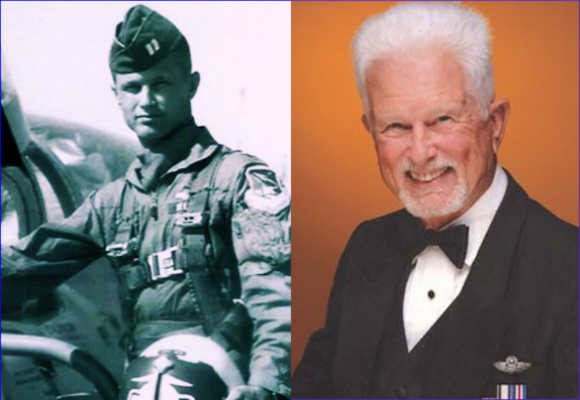 |
| Ground Crew Loading a U.S. Marine DH-4 Bomber, 1918 |
First, meet the author of U.S. Attack Aviation. Retired Air Force Brigadier General R.G. Head knows his aircraft, combat operations, aviation engineering, international relations, and Pentagon politics. He received his private pilot's license at age at age 17, and—after graduating from the Air Force Academy—his service of 27 years as a pilot of fighters and attack aircraft, included 325 combat missions in Vietnam, multiple command positions, four different Pentagon assignments, and a tour as an instructor back at the Air Force Academy. While on active duty he received many honors including the Distinguished Flying Cross. However, he wasn't done when he retired from the Air Force. R.G. Head spent his next 15 years as a systems engineer working closely with the U.S. Navy. Next, in 2016, he wrote a biography of World War I German aviator Oswald Boelcke, which we reviewed on Roads to the Great War HERE, followed by researching a comprehensive WWI Aviation History Timeline as part of the recent Great War Centennial Commemoration The entire chronology is available HERE
 |
| Author R.G. Head |
Now, to the contents of his new book U.S. Attack Aviation. The work opens with an interesting historical/philosophical discussion of how the "attack" mission emerged and why its aircraft differ from "air superiority" fighter planes. In the First World War, it immediately became clear that aviation could make important contributions to the success of ground operations through aerial reconnaissance. Soon, techniques were also developing for close air support for friendly forces by strafing and bombing enemy formations and interdicting their supply lines. Specialized tactics and aircraft soon began evolving to fulfill these missions. Similarly, more effective pursuit planes and interceptors—whose main mission came to be protecting these other specialized aircraft in performing their tasks and destroying enemy aircraft performing similar missions—also came to the fore.
This process of the increasing specialization of military aircraft is detailed in the book's opening four chapters. These cover the American experience in the Great War and the way in which the nation's Air Corps/Air Force and Naval Air Service digested the lessons of the two World Wars and put into practice the doctrines of attack aviation. Interestingly, the military services of the U.S. even today do not share a common definition of "attack" or the "attack mission." The services seem, collectively, to prefer the term "strike," defined as "an attack to damage or destroy and or destroy an objective or a capability." In any case, striking the enemy is what attack aviation is all about.
 |
| Martin T4M Launching a Torpedo, Interwar |
The remainder of this 255-page book is built mostly around the dozens of specific aircraft used post-World Wars in the attack mission by the Air Force and/or Navy and Marine Corps. The sequence ranges from the propeller-driven A-1 Skyraider (operational 1946) to today's F-35 Lightning II. General Head has assembled an amazing amount of details about these planes, often supplemented by his personal experience flying them. For example, I found it interesting that while flying the F-100 Super Sabre he was trained in "low-level flying, simulated nuclear deliveries, conventional dive-bombing, napalm delivery at 50 feet, firing rockets, and strafing."
However, around the stories of aircraft and the competitions and politics that led to their procurement are personal stories of heroism like that of Capt. Bernie Fisher, who landed his A-1 in enemy territory to rescue a fellow downed pilot; succinct summaries of important operations like the failed Rolling Thunder campaign, and the decisive Linebacker II B-52 missions of Christmas 1972; and a host of interesting statistics like "Official Kill List" for the A-10 in Operation Desert Storm (997 tanks, 1,106 trucks, etc.). Also, the volume includes an absolutely terrific photo section with all sorts of aviation shots I've never seen, like the snazzy-looking Curtiss A-3 Falcon and the heads-up-display of an F/A-18
For someone like myself, who has a strong interest in the First World War, U.S. Attack Aviation brings a ton of fresh insight on the air war 1914-1918. For someone who has a general interest in military aviation R.G. Head has provided a concise, well-organized, and authoritative summary on the role of attack aviation in war from its inception through what ever is waiting in the way of human strife just over the horizon.
M.E. Hanlon

No comments:
Post a Comment